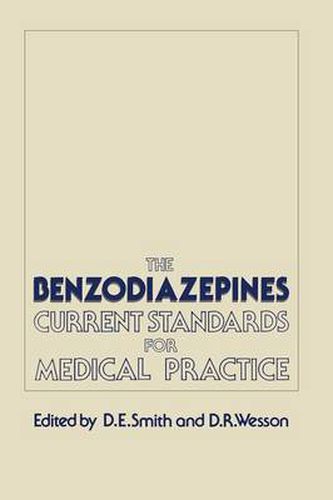Readings Newsletter
Become a Readings Member to make your shopping experience even easier.
Sign in or sign up for free!
You’re not far away from qualifying for FREE standard shipping within Australia
You’ve qualified for FREE standard shipping within Australia
The cart is loading…






This title is printed to order. This book may have been self-published. If so, we cannot guarantee the quality of the content. In the main most books will have gone through the editing process however some may not. We therefore suggest that you be aware of this before ordering this book. If in doubt check either the author or publisher’s details as we are unable to accept any returns unless they are faulty. Please contact us if you have any questions.
Since their introduction to medical practice in 1960, benzodiazepines have become among the most commonly prescribed medications and have, to a great extent, replaced prescriptions of short-acting barbiturates and other sedative-hypnotics. The discovery of their psychoactive properties was almost missed. During a cleaning of their laboratory in April of 1957, Earl Reeder called to Leo Sternbach’s attention several hundred milligrams of a substance and its hydrochloride salt they had synthesized in 1955 which had not been submitted for pharmacological testing. They sent the hydrochlor- ide salt, later given the generic designation of chlordiazepoxide (Librium), for animal testing to the pharmacology department, which was under the direction of Lowell Randall. Six tests, used for preliminary screening of tranquilizers and sedatives, were conducted. Dr. Randall phoned Dr. Sternbach a few days later to report that the compound possessed interesting psychotropic properties in animals (Sternback. 1983). Subse- quently over 3000 1,4 benzo-and heterodiazepines have been synthesized (Sternbach, 1983). and more is known about the mechanism of action of this class of medications than any other psychotropic drug class (Haefely, 1983). Used for treatment of anxiety. insomnia. muscle spasticity, convulsive disorders, anesthesia adjuncts and alcohol detoxification. the benzodiazepines have significant advantages over their predecessor medi- cations: the short-acting barbiturates, meprobamate and methaqualone. Of significance is their high lethal/therapeutic ratio. of importance in cases of overdose; their failure to activate liver microsomal enzymes.
$9.00 standard shipping within Australia
FREE standard shipping within Australia for orders over $100.00
Express & International shipping calculated at checkout
This title is printed to order. This book may have been self-published. If so, we cannot guarantee the quality of the content. In the main most books will have gone through the editing process however some may not. We therefore suggest that you be aware of this before ordering this book. If in doubt check either the author or publisher’s details as we are unable to accept any returns unless they are faulty. Please contact us if you have any questions.
Since their introduction to medical practice in 1960, benzodiazepines have become among the most commonly prescribed medications and have, to a great extent, replaced prescriptions of short-acting barbiturates and other sedative-hypnotics. The discovery of their psychoactive properties was almost missed. During a cleaning of their laboratory in April of 1957, Earl Reeder called to Leo Sternbach’s attention several hundred milligrams of a substance and its hydrochloride salt they had synthesized in 1955 which had not been submitted for pharmacological testing. They sent the hydrochlor- ide salt, later given the generic designation of chlordiazepoxide (Librium), for animal testing to the pharmacology department, which was under the direction of Lowell Randall. Six tests, used for preliminary screening of tranquilizers and sedatives, were conducted. Dr. Randall phoned Dr. Sternbach a few days later to report that the compound possessed interesting psychotropic properties in animals (Sternback. 1983). Subse- quently over 3000 1,4 benzo-and heterodiazepines have been synthesized (Sternbach, 1983). and more is known about the mechanism of action of this class of medications than any other psychotropic drug class (Haefely, 1983). Used for treatment of anxiety. insomnia. muscle spasticity, convulsive disorders, anesthesia adjuncts and alcohol detoxification. the benzodiazepines have significant advantages over their predecessor medi- cations: the short-acting barbiturates, meprobamate and methaqualone. Of significance is their high lethal/therapeutic ratio. of importance in cases of overdose; their failure to activate liver microsomal enzymes.